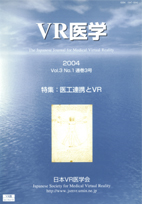With the introduction of multislice CT technology, new-generation alternative techniques for colorectal cancer imaging have been reported. These new imaging techniques, such as 3 D-CT, virtual colonoscopy, and virtually stretched image of the colon can be used by commercially available image workstations. Three-dimensional CT image gives us easy understanding how running the colon in the abdomen and the status or the location of cancer viscerally. Virtual colonoscopy shows the endoscopic view of the colon that is almost same as the view of colonoscopy. Recent application provides more flexible navigation system. “One click” can setup the trace route of the entire colon automatically, which combines the views of the cross-sectional images give more accurate information. Virtually stretched image of the colon likes the features of surgically resected specimen. As for this method, the observation of the entire colon is speedy and easily. However interpretation of these images is time-consuming, if we apply these methods for screening of the colon. New developments such as tools of computer-aided diagnosis will be introduced near feature. At that time, current standard techniques for colorectal cancer screening including radiographic imaging (barium enema) and colonoscopy, may replace these new-generation techniques.
抄録全体を表示
